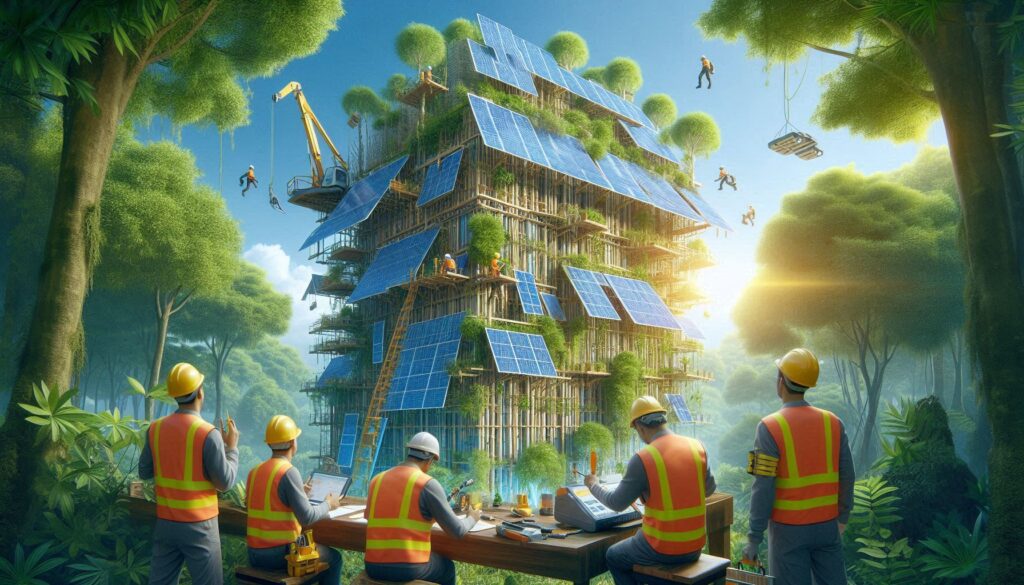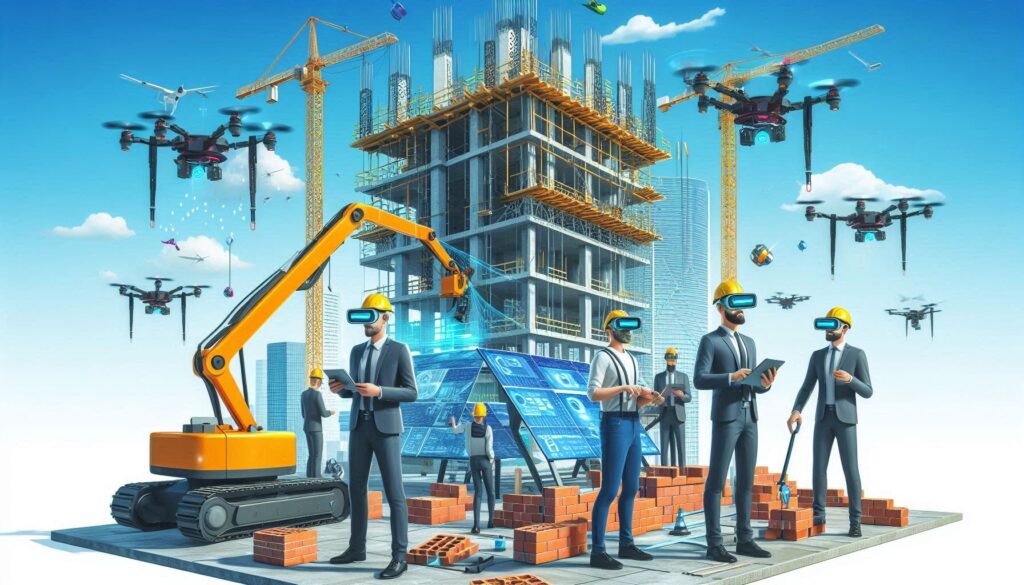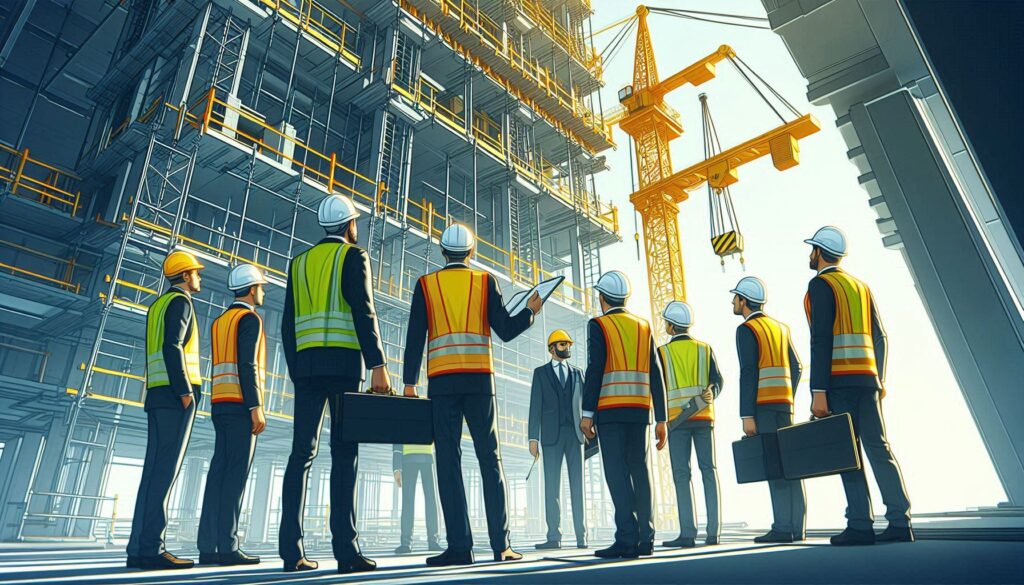
New Trends in the Construction Industry in 2024
The construction industry is evolving rapidly, driven by technological advancements, changing societal needs, and a growing emphasis on sustainability. As we move through 2024, several emerging trends are shaping the future of construction. These trends promise to enhance efficiency, reduce environmental impact, and improve the overall quality of construction projects. Here are some of the most significant trends to watch in the construction industry this year.
1. Sustainable and Green Construction – New Trends in the Construction Industry
Eco-Friendly Materials: The use of sustainable building materials is becoming more prevalent. Innovations like carbon-negative concrete, recycled steel, and bio-based materials are gaining traction. These materials reduce the carbon footprint of construction projects and promote a circular economy.
Energy-Efficient Buildings: There is a strong push towards constructing energy-efficient buildings. Techniques such as passive solar design, high-performance insulation, and the integration of renewable energy sources like solar panels and wind turbines are becoming standard practice. Smart building technologies that optimize energy use are also on the rise.
2. Advanced Building Information Modeling (BIM) – New Trends in the Construction Industry

4D and 5D BIM: Building Information Modeling (BIM) has been a cornerstone of construction technology for several years. In 2024, the industry is embracing 4D (time) and 5D (cost) BIM. These advanced BIM models allow for better project visualization, planning, and cost management. They enable stakeholders to understand the project lifecycle comprehensively, improving decision-making and reducing risks.
Collaborative Platforms: Cloud-based BIM platforms are facilitating greater collaboration among project teams. Real-time updates and access to shared data ensure that all stakeholders are on the same page, reducing errors and enhancing efficiency.
3. Modular and Prefabricated Construction – New Trends in the Construction Industry
Off-Site Construction: Modular and prefabricated construction methods are gaining popularity due to their efficiency and cost-effectiveness. Building components are manufactured off-site in controlled environments and then assembled on-site. This approach reduces construction time, minimizes waste, and improves quality control.
Customization and Scalability: Modern prefabrication techniques offer greater flexibility and customization. Advanced manufacturing technologies, such as 3D printing and robotic assembly, allow for scalable solutions that meet specific project requirements without compromising on design or quality.
4. Smart Construction Technologies

IoT and Connected Devices: The Internet of Things (IoT) is transforming construction sites into connected environments. Sensors and devices monitor various aspects of the site, from equipment usage to environmental conditions. This real-time data collection helps in predictive maintenance, resource optimization, and enhancing site safety.
Drones and Robotics: Drones are being used for site surveys, inspections, and progress monitoring. They provide high-resolution imagery and data that improve project accuracy and efficiency. Robotics, including autonomous vehicles and robotic arms, are performing repetitive and dangerous tasks, reducing human error and enhancing safety.
5. Artificial Intelligence and Machine Learning

Predictive Analytics: AI and machine learning are being leveraged to analyze large datasets and predict project outcomes. Predictive analytics helps in identifying potential risks, optimizing project schedules, and improving resource allocation. This proactive approach reduces delays and cost overruns.
AI in Design and Planning: AI-driven design tools are revolutionizing the planning phase. These tools can generate multiple design options based on specific criteria, allowing architects and engineers to choose the most efficient and cost-effective solutions. AI also aids in automating complex calculations and simulations, enhancing design accuracy.
6. Enhanced Safety Measures

Wearable Technology: Wearable devices, such as smart helmets and vests, are improving worker safety. These devices monitor vital signs, detect hazardous conditions, and provide real-time alerts to workers and site managers. They help in preventing accidents and ensuring compliance with safety regulations.
Augmented Reality (AR) and Virtual Reality (VR): AR and VR are being used for safety training and site inspections. These technologies provide immersive simulations that prepare workers for real-life scenarios, enhancing their skills and awareness. VR is also used for virtual walkthroughs, allowing stakeholders to identify potential issues before they arise.
7. Resilient and Adaptive Infrastructure
Climate-Resilient Design: As climate change impacts become more pronounced, there is a growing emphasis on designing resilient infrastructure. Buildings and infrastructure projects are being designed to withstand extreme weather events, such as hurricanes, floods, and heatwaves. This includes the use of resilient materials, elevated structures, and advanced drainage systems.
Adaptive Reuse: The adaptive reuse of existing structures is gaining popularity. Repurposing old buildings for new uses reduces the need for new construction and preserves historical and cultural heritage. This trend is particularly significant in urban areas where space is limited.
Conclusion
The construction industry in 2024 is characterized by a strong focus on sustainability, technology integration, and improved safety measures. Trends like sustainable construction practices, advanced BIM, modular construction, smart technologies, AI, enhanced safety protocols, and resilient infrastructure are driving the industry forward. As these trends continue to evolve, they promise to make construction more efficient, environmentally friendly, and responsive to the challenges of the modern world. Embracing these innovations will be key to the industry’s success and its ability to meet the growing demands of a rapidly changing world. New Trends in the Construction Industry in 2024